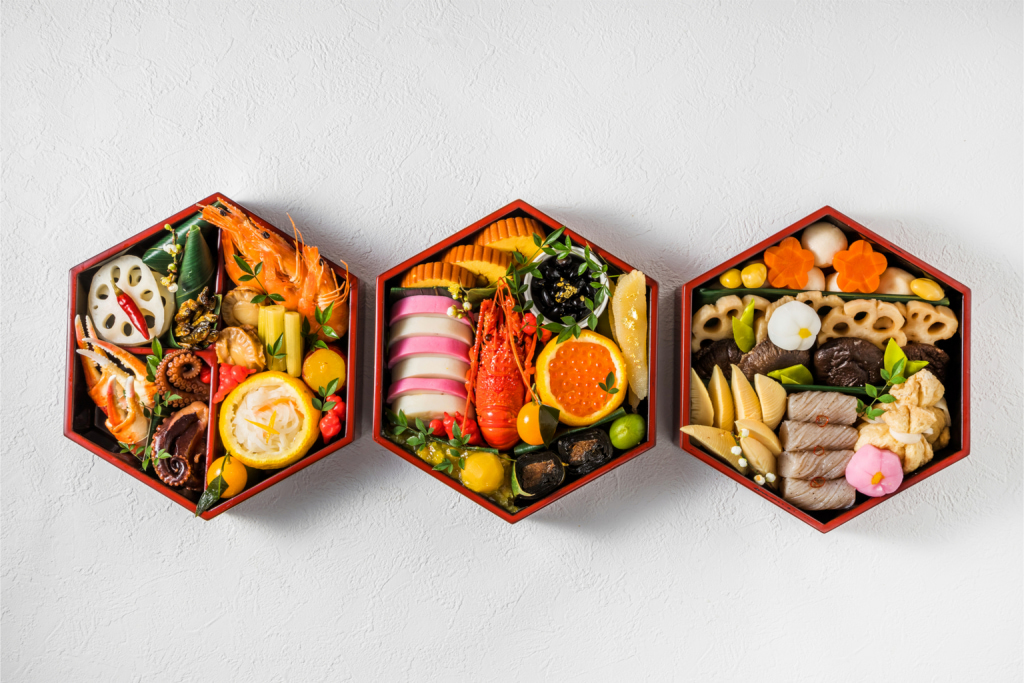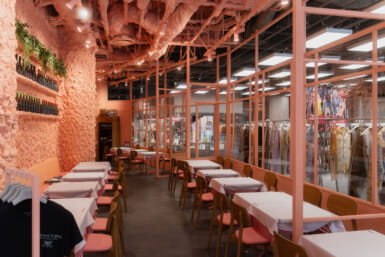A Western New Year’s celebration often brings with it images of champagne, formal wear, friends, fireworks, and midnight kisses; a Japanese New Year on the other hand, is filled with family, food, and a trip to the local temple.
Though entirely different from Western celebrations, one of the principal ways of celebrating Japanese New Year is laden with meaning and tradition, but in the form of something neat you can eat. These dishes are known as osechi (お節料理); served in a set of lacquered boxes known as“jubako” (重箱), there is a rich history to each cubby (even the layout!) to these special New Year bento, with layered connotations to each bite. In fact, much of the UNESCO Tangible Cultural Heritage recognition for washoku (Japanese cuisine) is connected to these traditional holiday dishes.
The tradition of preparing an osechi has been around since the dawn of Japan. “New Years” and the idea of having select, subsequent days off as the year begins came from China, centuries ago. Old traditions say that no cooking is to be done on the first three days of the New Year, so the osechi dishes are meant to be prepared the week before January 1.
Food consumption relevant to the sacred days begins on December 31, with “toshi-koshi soba” (年越し蕎麦), the name itself meaning “crossing the year noodles.” The noodles, representing having “a long upcoming year,” are also a very simple dish implemented to make cleaning up and cooking easier so that all family members could be settled and ready for the midnight chimes.
Once the New Year begins, the three-tiered jubako boxes come out, and the dining commences. Ebi, or prawns, are one of the centerpieces of the box, and are included as a desire for a long life, with the shape literally referring to a “bent waist” of old age. The red sea-bream, tai (鯛), symbolizes success. Black soybeans (“kuro-mame,” 黒豆) also often feature and represent “health.”
For couples, herring roe (kazunoko, 数の子) may be eaten as the name symbolizes the gift of bearing children. Similarly, the unusually bitter orange you see in supermarkets is called daidai (橙), and is commonly eaten for New Years as it means “passing through generations,” impressing good wishes for children already present.
Fashion and joy are also included as wishes for the New Year, by the presence of datemaki (伊達巻), a rolled omelette with shrimp, and konbu (seaweed, 昆布) respectively. Wealth, also a common theme in the New Year, comes in the form of egg roulade, nishi tamago (錦卵). Not to be forgotten, kamaboko (蒲鉾) is a broiled fish cake that bears the famed rising sun of Japan, acting as the most intrinsically festive addition to the bento.
The fascinating code in each partition of the jubako even goes beyond those mentioned (you can check out a few more here). Although the original meanings of the various dishes may not be as strong as they were in the past, this steadfast tradition is sure to continue for generations to come.
–Natalie Jacobsen
Image: norikko / Shutterstock.com









